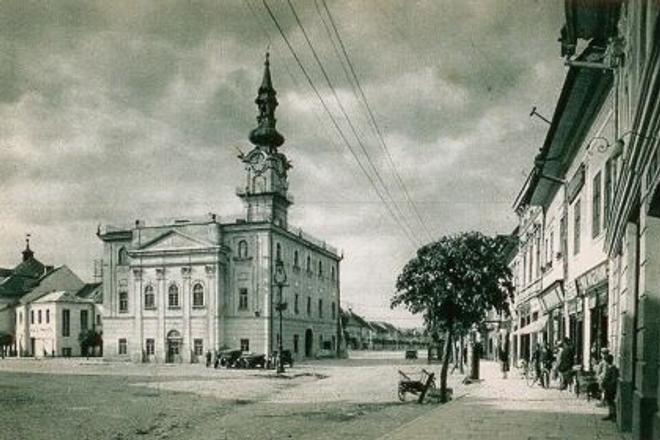This peaceful scene in downtown Kežmarok indicates that back in 1934, when this postcard was published, life moved at a slower pace that it does today.
Only three cars are parked in front of the town hall, and in all likelihood those were the only cars in all of Kežmarok, as at that time photographers often tried to include everything in a photo that could show off a town’s perceived technological progress.
Fire has shaped the layout of Kežmarok; the first city centre was located elsewhere, but it was partially burned during an invasion of the Hussites. It was then relocated to its current spot.
The town hall itself has stood there since 1461. Over this period it was reconstructed so many times that it could have served as an illustration of the history of European architectural styles.
It was originally built by an architect known as Jörg. When the original Gothic town hall burned down in the early 16th century, it was redone in the Renaissance style.
In 1641 the tower was added with, according to a document from 1720, decorated with moral inscriptions. Thanks to another fire in 1779, the town hall was rebuilt yet again, this time in a neo-classical style.
However, this was not the town hall’s last infernal disaster: the most recent fire to ravage the building occurred in 1922. The fire was a large one, as 29 other houses in the square also burned down. The second floor was added during the rebuild, and the town hall has retained its current appearance ever since.
The town hall has a cellar, in which a water spring was active during the 16th century. Rumours tell of an escape tunnel that leads out of the cellar, though whether the tunnel is myth or truth is lost to history.
Kežmarok’s town hall served as the residence of its mayors and senators. They were responsible for looking after the town’s supplies, as well as its markets and school, among other things. This was common in other towns, too, but it remains unclear whether they also performed their duty as local “bird snipers”, as they were supposed to in this town of Spiš region in the 15th century. It still serves as the seat of the municipal office today.
This article was originally published by The Slovak Spectator on August 25, 2014. It has been updated to be relevant today.

